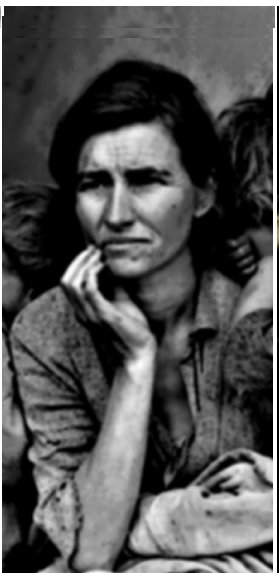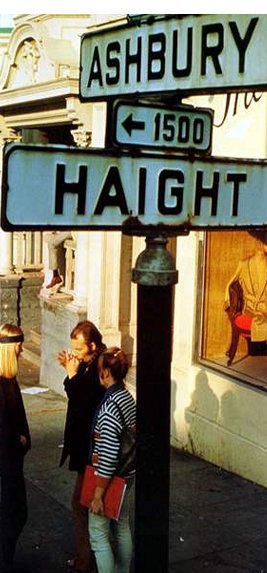Promulgating a Progressive Pantheon Patrick Mickelson
Kevin Starr is a USC Professor of History and an
accomplished writer. His landmark series on California
has received much critical praise and popularity in recent years. He graduated
from Harvard with a PhD of English and American Literature in 1969. As a
professor, he researches California
history and a history of American culture, as well as the developments of urban
societies. He is also a contributing editor to the Los
Angeles Times.
From
the tribes of the sands of early California
to Cecil B. De Mille and his Ten
Commandments, California has
embodied the drive of a society moving towards a zenith. In Inventing the Dream: California through the
Progressive Era, Kevin Starr tracks the history of Southern
California beginning with the primordial days of old and
majestically sweeping into the period of early Hollywood
all the while setting the stage for the progression of Southern
California into a suburban empire. By playing the contrast of ¡§the
California of fact and the California
of imagination¡¨, Starr shows the interplay between dream and reality, focusing
on the California pictured in the
eyes of those who built it and analyzing the path by which those dreams
modulated into imperfect being, but stepping stones towards the California
of present nonetheless. 1
Starr
begins his analysis cleverly guised as narrative by describing the geography of
California at a time where man¡¦s
impact was miniscule and irrelevant. The uniqueness of the coastal regions of California
from the distinctive inland valleys and deserts played a key role in the
establishment of civilization and the migration of peoples here, with Starr
essentially arguing geographic determinism in the cultural roots of California.
After native culture established firm settlements three thousand years ago, the
Spanish arrived in 1535 and created settlements from the south and going north
to the last mission in San Francisco
in 1823. In what would eventually become cities, rancheros aggregated large
expanses of land into single pieces of property¡Xa distinctly Californian
system. As California moved into
the 1880s, previously established Latin roots faded slowly and characters like
Edward Beale handled business centered around these
systems, largely because they were appropriate to the region. Until the 1890s
Starr describes California as a
¡§literary wasteland¡¨ with the exception of the post-Civil war San
Francisco literary movement which included the great
Mark Twain.2 Towards the turn of the century however, words extended
through all mediums, from novels to news publications, with everything of
importance being recorded. It was during this period that the great mythos of California
romanticism was born, epitomized by Helen Hunt Jackson¡¦s Ramona which Starr portrays as the pre-eminent California
novel and references throughout the course of the book as a sort of reference
point. Even as early as this, the regional distinctions that diversify and
enrich California presented and developed within their own circles more or less
independent of the other regions except for the key points of population
influx.
By
the third chapter, the dream becomes more artistic than developmental, and in
many ways is described as less Californian than simply an amalgamation of the
cultures that contribute to California.
Before 1890, California grew
steadily but gradually until that point when it skyrocketed geometrically until
California, and particularly Southern
California boomed with prosperity. Southern California¡¦s minds
stood out as a regional oddity; Charles Lummis, a man
Starr relentlessly mentions to be a Harvard man (a position Starr himself
admires), was an eastern Yankee turned Vaquero author and literary great. He
wrote poetry and sent his books to the likes of Chief Justice Oliver Wendell
Holmes, empathizing with other writers of the eastern United
States consciousness. However, despite the
high-mindedness of the art and the rhetoric, places like Los
Angeles were defined by money more than mythos;
business was key in the sustenance of the city of the
Angels as were the eastern intellectuals who created prosperous business
ventures there. Starr explains the reason for the immigration of the Yankees as
¡§thousands of health-seekers pouring into Southern California¡¨,
whether it be the weather or the perceived quality of
nature of the region.3 Chapter four explains the first outgrowths of
Protestant Pasadena in the Hispanic-Catholic southern California
as the New England community rather than the predominant
heritage of the region. Men like George S. Patton who led the United
States to victory in the pacific were
spawned in white Pasadena, the town
of the upper class, high society folk. The southern California
economy was founded primarily on the export of its produce: orange¡Xrendering
the term ¡§citrus culture¡¨. Once again, the idea of geographic determinism
supports that notion, as the culture revolved around its economy, determined
largely by the arid climate which allowed for the growth of California
Oranges¡Xthe namesake for Orange County.
The
most significant section of the book is devoted to the Progressive movement in California.
If the dream of perfection that guided so many incredible individuals was the
fuel, the era of Progressivism was the engine that made ethereality into
reality. The beginnings of the progressive movement lay embedded in the
revolutionary architecture of Arthur Page Brown who coasted on the cutting edge
of San Francisco structure and was
commissioned for hundreds of projects that contributed largely to the economic
and intellectual prosperity of San Francisco.
Many of these projects were transportation based and helped accommodate the
growth of the city with ferry ports to ease access to bay transport. The
progressive elements of chapter seven center around reversing the notion that
California was ruled ¡§by an omnipotent oligarchy and governed by the corrupt
party machines which the oligarchy subsidized¡¨.4 While Progressivism
may have been the American answer to socialism, a small communist community did
exist in Southern California run by Patrick Calhoun and Abe Reef. The disparity
between socialist reform and the current state of affairs was essentially
bridged by this reform and led to the advancements of women, labor, and so
forth. Another important group Starr brings attention to is the
Lincoln-Roosevelt League which actually won many political positions and helped
launch key progressive governor Hiram Johnson into office (who had at the time
had strong links with the Teamsters union). Of most of the reforms, Starr
focuses on the goals of the Johnson California to reform the government linkage
and monopoly of the Southern Pacific railroad company by reigning in some of
the delegated powers it had received through the bedding of business and
bureaucracy. With the movement in
its final days, progressivism began to burn out during the 1910s and between
women¡¦s suffrage and the First World War, was wrapped up for good by 1920.
The
final section of Starr¡¦s progressive narrative is the rise of Hollywood
as the greatest asset to not only Southern California,
but also to the world as well. While Hollywood
began as Pasadena did¡Xa small
protestant community¡Xit quickly rose to the top of the economic echelon after
Thomas Edison¡¦s invention of moving pictures. Once the process simplified and
movies could be made by small teams, the possibilities grew endless; soon,
filmmakers D. W. Griffith and Cecil B. De Mille revolutionized simple moving
pictures by creating modern film. Whether it be ¡§Biographs¡¨
by Griffith (or his racist opus The Birth
of a Nation) or De Mille¡¦s sexual comedies,
Hollywood existed by cutting the edge of the social frontier; Starr quotes
Lenin by saying that ¡§the cinema...must and shall become the foremost cultural
weapon of the proletariat¡¨, thus attributing Hollywood the honor of being the
nation¡¦s voice.5 Taking precedence, California represented the
dreams of ordinary people. People could come from the east out to the edge of
the frontier and create their lives anew. Business grew from the sown seeds of
the orange fields and grape vineyards. Ordinary men became extraordinary in the
world viewed through a lens and soon enraptured the whole country¡Xmaking Hollywood
the fifth largest US
industry by 1926. With the rise of Hollywood,
a great deal of anti-Semitism revealed as resistance to the fact that many of
the investors of film (especially before 1915) were either eastern banks or
Jews starting movie studios. The dream was never more embodied than by the
glamour of Hollywood, which seemed
that even if not everyone could have the dream, it
could be captured forever in their imagination for the price of an admission
ticket.
Starr¡¦s
thesis presents simply that the two Californias, one
of fact and the other of dream, ¡§shape and reshape each other¡¨ the same way
Protestant high-mindedness coincided with the region¡¦s Catholic traditions.6
Because these elements both complemented and tugged at each other, they created
a natural forward evolution for the state. The concept of actually progressing
forward, Starr argues, is a byproduct of the personal goals of the great
individuals of California
who¡Xmore than movements¡Xcontributed to the growth of cities and regions. They
sought to build lives for themselves and in the process created the world
around them. With the ending of the Southern Pacific Railroad monopoly, not
only were other railroads allowed to prosper, but also those who utilized
railroads had greater freedom in choosing who transported their goods and for
what price.
Starr
in many ways writes on the conservative side of history; his devotion to the
power of the individual, relative focus on New Englanders, and generally
romantic tone all point his book away from the more New Left perspective of his
peers. By focusing less on the movements of women and minorities and more on
the development of the upper classes, the works of the Harvard alumni in
southern California, and the
patronage of the extremely wealthy for the development of the arts, Starr leans towards the conflict-less unity of consensus historioragraphy. Ultimately being a New Englander himself
contributed to Starr¡¦s focus on the ¡§protestant high-mindedness¡¨ of the Southern
California he pictures¡Xhe identifies with it. On the other hand,
he addresses the siege of California
by corporations, noting that by 1870 ¡§much of the land
of California had fallen into the
hands of a few individuals or corporations¡¨, thus Starr is not without gray
areas in his treatise.7
While
Starr is popular with consumer historians, literary critics certainly find
numerous grounds on which to lend their words. In a review by Raymond Starr of The Journal of San Diego History, Kevin
Starr¡¦s examination of California
and depth of knowledge allows for praise while his neglect of key issues
presents itself at the forefront. Raymond Starr argues that ¡§one gets the
feeling that the labor struggle is not Starr¡¦s favorite subject¡¨ as Starr never
mentions the great involvement of the Industrial Workers of the World and their
actions in the 1912 free speech movement.8 Many of the topics
concerning California¡¦s development had been covered in Starr¡¦s previous book
and thus, for one not reading the series as a whole, the development of
California¡¦s irrigation system and the general movement of water is shortchanged
considering its magnitude on the events and development of the state that is
not naturally blessed with water. Raymond Starr does, however, recognize the
skill by which Starr shows that the ¡§dream¡¨ of California
becomes sidelined by the ambitions of profiteers and is a byproduct of the
search for economic fulfillment rather than the progress of all. In short,
Starr¡¦s history is good, but his narrative has some plot holes.
Michiko
Kakutani of The
New York Times had a less favorable review for Starr. She states that Starr
¡§never quite pulls off the ambitious task that he has set himself¡¨ and that
instead of presenting a narrative that illuminates the dream the California
represents, Starr fumbles through disorganization.9 The chapter on
Arthur Page Brown and San Francisco architecture certainly was a departure from
the Southern California focus that the book was described as and simply should
have been in the first novel that encompassed more of Northern California.
Ultimately, she claims, the book is a cameo of ideas and characters that never
culminates in a cohesive vision and thus Starr set a goalpost he could not
conceive in actuality.
For
the most part Starr creates his vision but in many regards, does so
haphazardly. The chapters and overall flow of the book read disjointedly, at
times sacrificing flow for atmosphere and the addition of another anecdotal
rags-to-riches story to emphasize the mythos Starr himself enjoys. Also key is
Starr¡¦s predilection for the New England-intellectual sentiment. At times, the
addendum of another ¡§Harvard man¡¨ description of Charles Lummis
seemed at times superfluous and a less-than-subtle hint at a bias.10
However, this lean works two-fold; firstly, it hints at bias. Second, it
presents a key notion to Starr¡¦s thesis: that California¡¦s
dream was forged by eastern individuals. The saying ¡§it takes one to know one¡¨
applies very much here and aptly describes some of the more intentional slants
that present themselves throughout the book. In general, Starr creates a thorough
vision but steers clear of controversy and more risk-taking analyses of
history, instead favoring the road more traveled¡Xa sure fire, accessible
historical effort.
For
the most part, California seemed
to be a world unto itself and never dealt much with the events on the east
coast. Starr avoids delving into California¡¦s
involvement in the Civil War and the First World War, focusing on its
independent development. The sparks of California literature, however, are
attributed to post war movement west as Starr describes how ¡§for a brief period
after the Civil War, San Francisco was the literary capital of the nation¡¨.11
Instead of war and post-war evolutions, Starr focuses on California¡¦s
distinctness from the rest of the country in that it was an amalgamation of
ideas and traditions into a macro-culture. The synthesis of Hispanic
Catholicism and Anglo-Protestantism were good bedfellows in the cultural
bedrocks of the land, allowing for business with a certain ease. The flow of
California seemed to work the same way the Spanish conquered it¡Xbottom to top,
with Southern California often times leading the social revolutions of the
state and in the case of Hollywood, creating an economic titan.
Starr
describes California as the ¡§¡¥magic lantern screen¡¦ onto which [Americans¡¦]
national fantasies are projected¡¨.12 In this way, Starr portrays
California as the tangible final frontier, the land of milk and honey that
people ventured to, beginning their lives anew in search of health, wealth, and
general prosperity. With California
to the west, Americans had that hope of a future and life ahead of them. Hollywood
gave visions and dreams to the people, especially in times of doubt and helped
make the 20s roaring. Because of the magnitude of the California
experience, it was on the frontline of social revolution and led the way for
the rest of the country. Starr¡¦s ultimate argument summates as the ¡§city upon a
hill¡¨ notion of California¡Xone
that has since become shopping malls and suburbia.
Regardless
of the problems with disorganization or other trifles, one can fault neither
Starr¡¦s dedication nor his passion for the subject. To him, California
embodies the dream he writes about. If New Englanders are the descendants of
the stiff-upper lip traditions of old Europe, California was the fire and
passion that gave the United States contrast, if not only because it enigma was
enshrouded by the vast expanses that make California more analogous to a
country than a state. The people who came to California came out of a faith in
the notion of the ¡§search for a better life¡¨ and while many suffered the same
socio-economic adversity found around the country, others found the glory and
satisfaction of an individual success¡Xthe foundations of what progressed and
expanded the idea of California.13 While the dream may have been
lost to the reverse-subdivisions of suburbanism,
Hollywood still embodies the art and creativity that makes California that
center of inevitable attraction. Perhaps the journey pales to the importance of
the necessity to dream it.
1. Starr, Kevin. Inventing the Dream: California
Through the Progressive Era. New
York: Oxford
University Press, 1985. Page vii
2. Starr, Kevin 31.
3. Starr, Kevin 75.
4. Starr, Kevin 199.
5. Starr, Kevin 309.
6. Starr, Kevin vii.
7. Starr, Kevin 164.
8. Starr. Raymond. "Book
Reviews," The Journal of San Diego
History Fall 1985. 2 Jun
2008
<http://www.sandiegohistory.org/journal/85fall/br-inventing.htm>
9. Kakutani. Michiko. "Books
of the Times," The New York Times 13 Feb 1985. 2 Jun
2000.
<http://query.nytimes.com/gst/fullpage.html?res=9E04E5DC1439F930A2575 1C0A963948260&scp=1&sq=inventing+the+dream&st=nyt>
10. Starr, Kevin 76.
11. Starr, Kevin 31.
12. Kakutani, Michiko 1.
13. Starr, Kevin 339.










